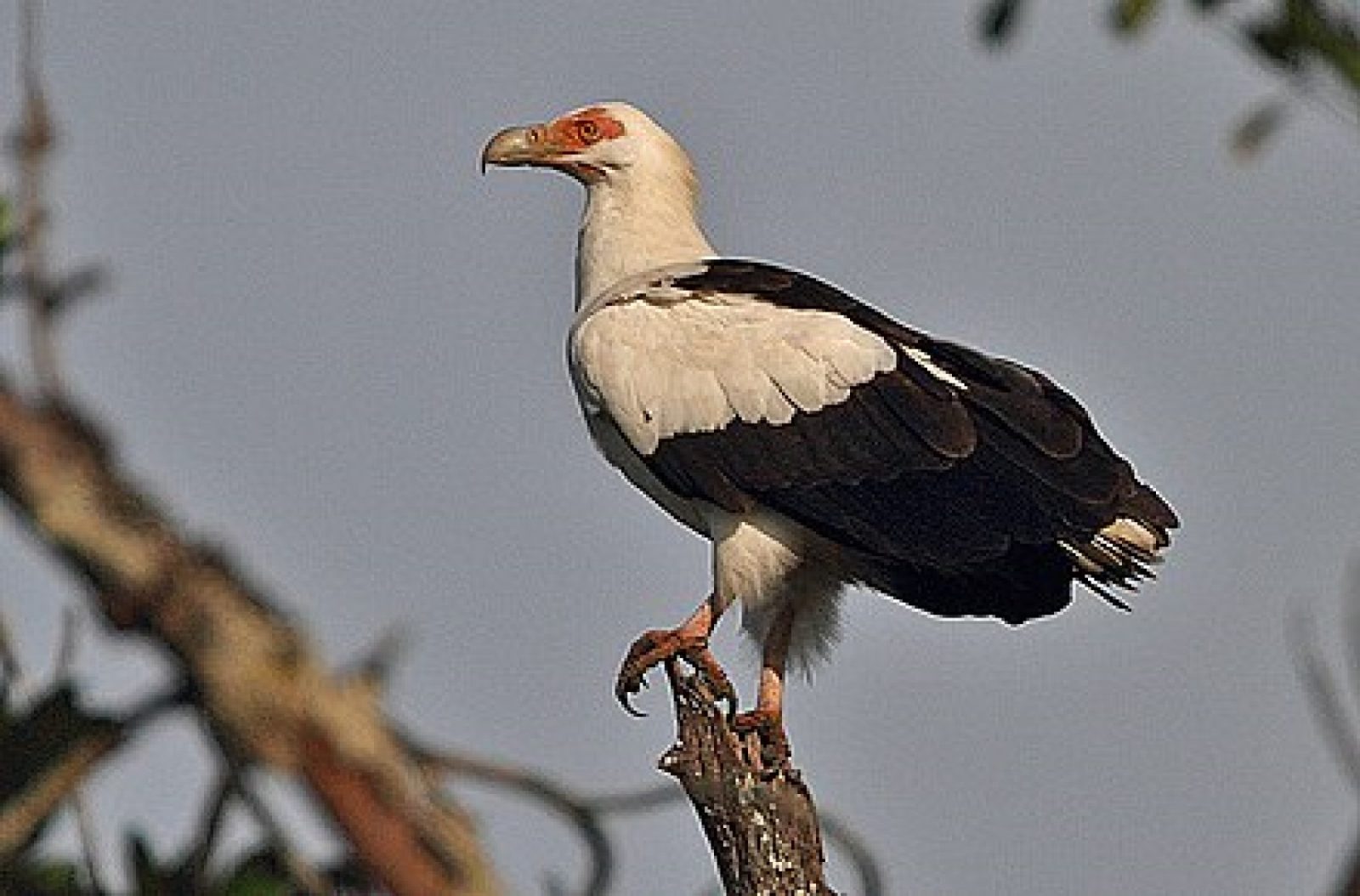
Palm-nut Vulture
The palm-nut vulture or vulturine fish eagle, is a large bird of prey in the family Accipitridae (which also includes many other diurnal raptors such as kites, buzzards and harriers, vultures, and eagles). It is the only member of the genus Gypohierax.
This bird is an Old World vulture (only distantly related to the New World vultures, which are in a separate family, the Cathartidae).
It breeds in forest and savannah across sub-Saharan Africa, usually near water, its range coinciding with that of the oil and Raffia palms. It is quite approachable, like many African vultures, and can be seen near habitation, even on large hotel lawns in the tourist areas of countries such as the Gambia.
Palm-nut vultures are found throughout most of the coastal areas of the African continent from The Gambia to Kenya and as far South as South Africa. The total African population is estimated to be 80,000 pairs. There are approximately 40 birds in South Africa.
The only Southern African subregions to have resident breeding pairs of palm-nut vultures are South Africa and Mozambique. The breeding distribution of the palm-nut vulture during the 1970s census period was centred on the Raffia palm groves of the Kosi Bay system and Mtunzini. Its distribution is linked to the presence of the Raffia palm at all permanently occupied sites, and the existence of this species at Mtunzini is entirely due to the artificial cultivation of Raffia palms. Currently there are 7 known nesting sites in South Africa and a total of 40 individual birds.
As the name suggests, the distribution of the palm-nut vulture closely tracks that of oil or raffia palms. Consequently, it is most common in coastal forests and mangrove swamps below 1,500 m (4,900 ft), but also occurs in wet savannas.
This species is widespread throughout much of Africa, overall fairly common and with a stable population. It is rarer and much more localized in South Africa, although not considered to be under any form of immediate threat in that country. That being said, the threats to this species in South Africa are not well understood. The low population size makes the species vulnerable to stochastic events. In Mozambique Parker (1999) observed that cutting down of coastal forest was threatening breeding habitat. The main threat to this species in South Africa is habitat loss. Open cast sand dune mining and urban expansion have reduced suitable habitats.
The cultivation of Raphia palms for its ornamental value is currently increasing providing food and nesting sites. There is also a large portion of its habitat protected by the Isimangaliso Wetland Park. There are no current species specific conservation initiatives as this species is the only vulture species in South Africa where the population size is increasing. The importance of maintaining this is that the South African satellite population in producing dispersing birds that are contributing to maintaining the Mozambique population (and hence the larger metapopulation).










